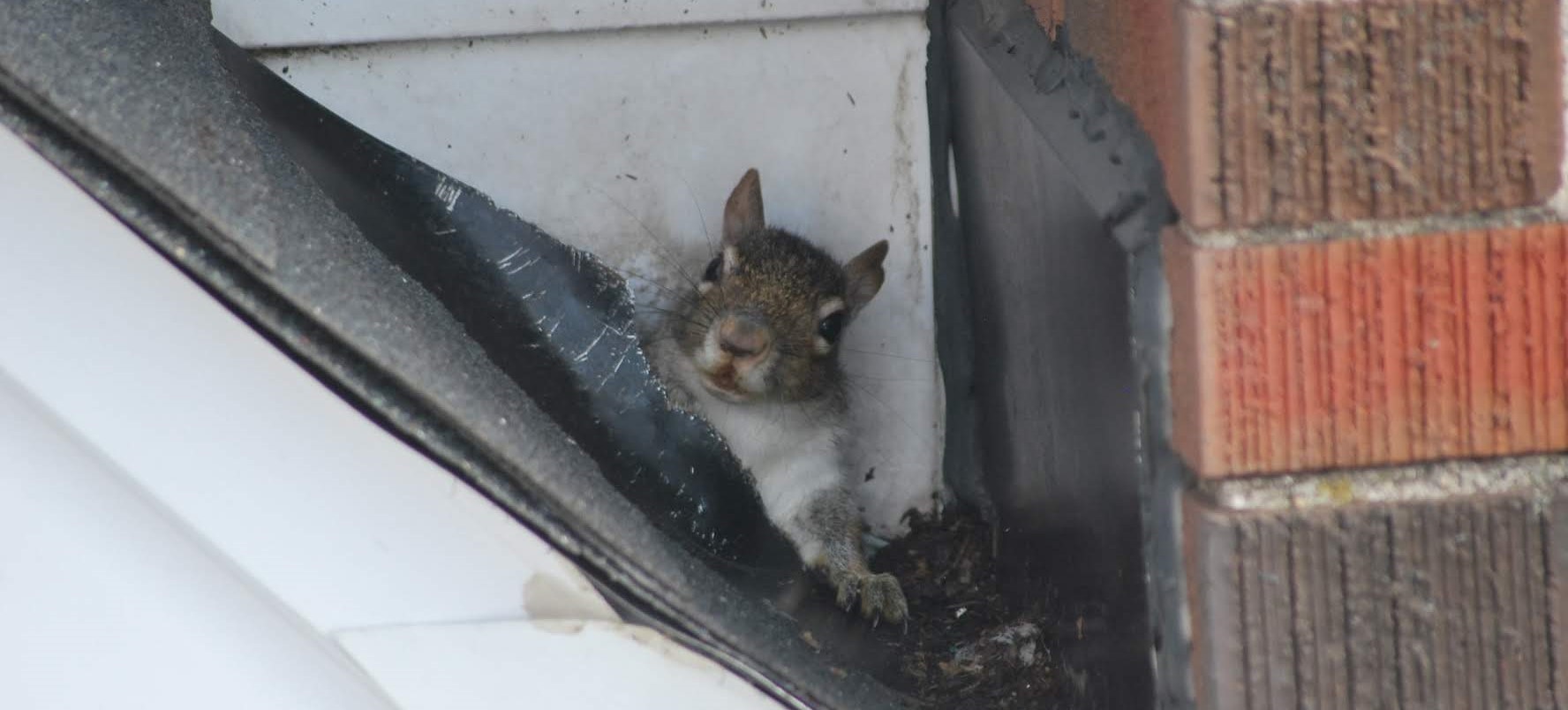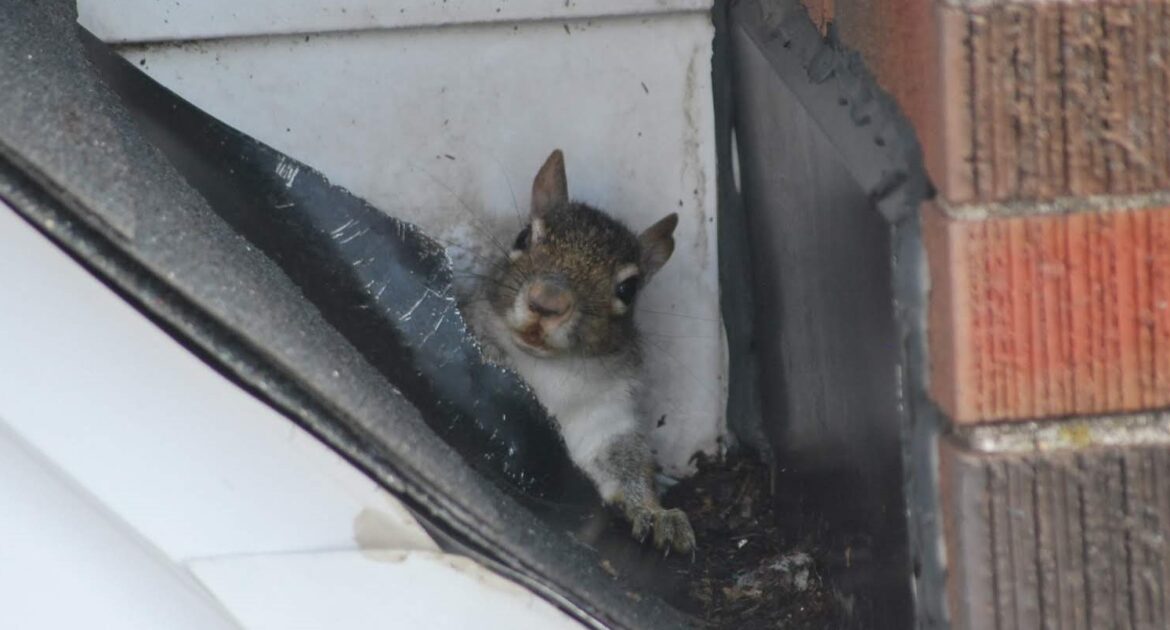Older homes come with charm, history, and often a touch of unique character that newer properties can’t match. But they also tend to come with their own set of challenges, including structural vulnerabilities that can make them more susceptible to wildlife risks in older homes. From loose shingles to aging vents, vintage properties may unintentionally welcome unwanted animal intruders. Fortunately, there are practical steps to prevent these older house infestation issues.
At Skedaddle, based right here in Atlanta, home of the iconic Fox Theatre, we’ve seen firsthand how older homes often need some extra care to keep animals at bay. Let’s explore why older homes may face these challenges and how you can protect your property effectively.
Wildlife Risks in Older Homes
The structural design and wear-and-tear common in older homes often make them more vulnerable to intrusion. Here are some specific features that contribute to wildlife risks in aged properties:
Aging Roofs and Chimneys
Many older homes have roofs and chimneys that may no longer provide the tight seal they once did, creating easy entry points for animals. Missing shingles, loose flashing, or deteriorating mortar can allow small animals like squirrels or raccoons to sneak in. Birds often utilize open chimneys as nesting spaces, creating blockages and fire hazards. Without maintenance, these entryways can quickly lead to unwanted guests.
Cracks in Foundations and Walls
Over time, cracks often develop in a home’s foundation or exterior walls. Gaps around windows, doors, and utility lines act as welcome mats for rodents, bats, or snakes. While these cracks may seem minor, they can become the primary entry point for animals seeking a safe, warm shelter.
Vintage Architecture With Ornamental Features
Decorative architectural features, common in older homes, may also be hiding spots or entryways for animals. For instance, ornate eaves, cornices, or soffits can create spaces animals like bats or squirrels exploit.
Outdated Insulation Materials
Older homes often use less durable insulation materials that can degrade over time. Animals like mice and rats are quick to chew through and nest in aging insulation, causing further structural damage and potentially spreading diseases.
Mature Landscaping and Proximity to Wildlife
An older home often sits on a mature lot with large trees and abundant landscaping that, while stunning, may bridge gaps for animals to access rooflines or attics. Atlanta’s green surroundings can foster this issue further, as we are fortunate to have an abundance of wildlife nearby.
How to Reduce Risks in Older Homes
- Repair and replace loose or damaged roofing materials promptly.
- Install chimney caps to prevent bird or bat access.
- Seal all visible cracks and gaps with caulk or foam insulation.
- Trim tree branches that extend near your roofline.
- Schedule regular inspections to catch potential vulnerabilities.
By addressing these points of entry, you can significantly reduce the risks of wildlife intrusion in older properties.
Older House Infestation Issues In East Cobb
For homeowners in older properties, it’s not uncommon to experience specific infestation issues that stem from these structural vulnerabilities. Here are some common scenarios we see:
Squirrel and Raccoon Problems in Attics
Squirrels and raccoons are resourceful intruders. They exploit weak sections of roofs or soffits to access attics, where they nest and raise their young. Once inside, their activities often lead to damage such as chewed wiring (a fire hazard) or destroyed insulation.
Rodents in Crawl Spaces
Mice and rats are notorious for squeezing into tight spaces. Crawl spaces in older homes often provide the perfect environment for these pests. If not handled promptly, rodents can quickly multiply, turning a small issue into a significant infestation.
Bats in Chimneys or Eaves
Bats often find their way into older homes through gaps in eaves, vents, or open chimneys. Their droppings, known as guano, don’t just create a mess but also pose health risks if inhaled over time.
Birds Nesting in Nooks and Crannies
Vintage architectural details, while lovely, often become nesting spots for birds. The noise and debris from these nests can be frustrating, and the nests themselves may block ventilation systems.
Signs of Infestation to Watch For
- Scratching or scurrying noises, especially at night.
- Droppings in attics, crawl spaces, or around the home.
- Unpleasant odors from nesting materials or waste.
- Damage, such as chewed wires, wood, or insulation.
- Visible evidence of entry points, such as holes or gaps.
Recognizing these signs early can prevent minor intrusion issues from escalating into major infestations.
Prevent Wildlife in Vintage Properties
Protecting your older home from wildlife doesn’t have to feel overwhelming. Here’s how to safeguard your property and maintain its charm without compromising security:
Conduct Routine Maintenance
Inspect your home regularly for gaps in the roofline, foundation cracks, or aging materials that could serve as entry points. Routine upkeep and weatherproofing can go a long way in keeping animals out.
Upgrade Vulnerable Areas
Sometimes, updates may be necessary to address structural weaknesses. Installing modern, durable materials in key areas such as attic vents or insulation can make a world of difference in prevention.
Properly Secure Food and Trash
Animal intrusions often start because they are looking for food. Keep trash bins sealed, and never leave pet food or other attractants outside.
Utilize Exclusion Techniques
Exclusion involves sealing any current or potential entry points animals might use to access your home. We use humane exclusion tactics to ensure a permanent solution to wildlife issues.
Regular Professional Inspections
Especially for older homes, scheduling regular professional assessments can uncover vulnerabilities you might overlook. Our Skedaddle team understands the unique challenges of properties in Atlanta and can help keep your home secure.
Why Choose Skedaddle for Wildlife Inspection Services?
At Skedaddle, we pride ourselves on delivering comprehensive and humane wildlife inspection services tailored to your specific needs. Our team of highly trained professionals brings decades of experience to every inspection, ensuring your home is thoroughly assessed for potential vulnerabilities and wildlife entry points. We utilize cutting-edge techniques and tools to identify hidden issues that might be affecting your property.
- Commitment to humane practices and long-term solutions.
- Focus on addressing root causes by sealing entryways and using exclusion methods.
- Prevents re-entry without harming the animals.
- Expertise in local wildlife behavior, particularly in the Atlanta area.
- Provides reliable, effective, and ethical service.
With Skedaddle, you can count on exceptional customer care, proven expertise, and the peace of mind that your property is in good hands.
Protect and Preserve Atlanta’s Vintage Homes
Historic homes are a staple of Atlanta’s character, with neighborhoods such as Druid Hills and Grant Park showcasing architectural charm that stands the test of time. However, these beautiful homes often face greater risks of intrusion by wildlife due to their age and unique structures. Fortunately, with proactive measures and expert help, you can enjoy your vintage property while minimizing the chances of infestation.
At Skedaddle, we’ve been helping homeowners across Atlanta protect their properties for over 30 years. If you own an older home and suspect animals have moved in or want to ensure your property stays protected, we’re here to help. Contact us today for humane and effective protection tailored to your home’s unique needs.
Your historic home should remain a haven for you, not uninvited guests.




